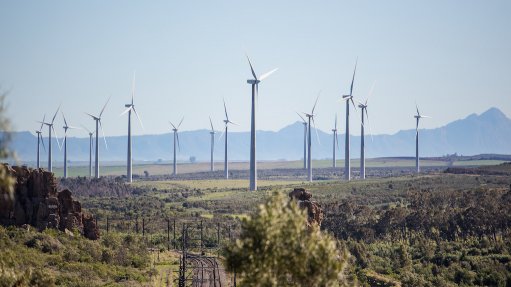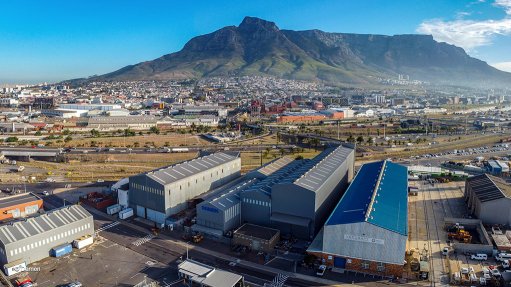Employment environment bleak, but there are opportunities for improvement

BMR Personal Finance Research Division head and senior researcher Jacolize Meiring explains how technology is impacting jobs, and how this can be managed to create employment opportunities
The 2024 ‘UASA South African Employment Report’ and second UASA/Bureau of Market Research (BMR) Employment Index paints a bleak picture of the country’s employment situation; however, there are areas of focus that can be pursued to turn this around, including skills development to capitalise on technology advancements.
This was highlighted by speakers presenting the reports on May 17.
BMR Personal Finance Research Division head and senior researcher Jacolize Meiring said the BMR’s research showed that South Africa continued to grapple with numerous acute labour market challenges.
This includes low job creation rates resulting from, among other things, slow economic growth, a lack of elasticity in the relationship between employment and economic growth and low skills levels among those who are actively seeking employment.
Moreover, the labour market’s limited capacity to absorb the unemployed is owing to low economic growth rates, low elasticity levels between employment and economic growth, potential employers’ preference for capital over labour, an inflexible labour market and the low skills levels of the population actively seeking work.
She also pointed out that low growth in real compensation resulted from low levels of entrepreneurship, the economy’s incapacity to absorb the unemployed and poor job creation, all of which contributed to high rates of inequality and poverty.
Further, a large number of positions that non-tertiary qualified workers would typically fill are instead occupied by those with a tertiary-level education, resulting in a less-than-ideal level of non-tertiary qualified worker absorption into the labour market.
This was because there was a mismatch between the labour supply and demand regarding skill quality and skill mix, Meiring explained.
Delving deeper into the research, BMR Market Intelligence Research Division research director and head Professor Carel van Aardt said the primary and secondary sectors were stagnating in terms of the number of people they employed; however, some positives were being achieved by the tertiary sector.
The trade sector is not faring very well in this regard, but the financial services and sales and services sectors were seeing good growth, with the latter benefitting from online sales, he noted.
He pointed out that these trends exacerbated one of the structural issues facing the country’s employment, that of the skills gap.
Van Aardt explained that the skills required for many companies in the trade and financial sectors, which were experiencing employment growth, required higher skills levels, however, the majority of people looking for jobs had skills that leaned more towards the primary and secondary sectors, which were not able to absorb them.
Employment of managers is also flatlining, he informed, mainly as a result of the advancement in technology, with developments in the Fourth Industrial Revolution, machine learning and AI, meaning that jobs that were traditionally done by managers were becoming incredibly capital-intensive.
While the professionals sector is doing well, this is not engendering a multiplier effect in terms of job creation.
Van Aardt said the labour market was also becoming more knowledge-intensive, with more people completing tertiary qualifications and a secondary qualification.
However, this was not having the desired multiplier effect in terms of job creation, he pointed out.
Unlike in other countries, where people with such qualifications ventured into entrepreneurship and created employment, in South Africa, these people were opting to become employed by others, he explained.
Moreover, a large percentage of people with secondary qualifications were unemployed, and were surviving on grants, rather than starting in the informal sector, Van Aardt said.
This is in contrast to other developing economies, he expanded, where a lack of a grant network forced people to become part of the informal sector of the economy.
The UASA/BMR Employment Index tracks the employment performance of the country’s economy over time, through five subindices.
The first of these, employment growth as a labour demand indicator, dropped since the pandemic, and then recovered a little. Van Aardt said that, since the start of this year, the expectation had been that employment would be subdued, and would then pick up a little.
He added that there were three uncertainties prevailing, namely, the outcome of the elections; capacity in terms of things like loadshedding; and business and consumer confidence in the economy.
The second subindex, that of production elasticity of employment as an indicator of the strength of the relationship between GDP growth and employment creation, had not grown considerably, Van Aardt pointed out, adding that this was currently weakening.
He explained that this weakening meant that for every 1% of GDP growth, the level of jobs added became lower, which boded badly for employment.
The third subindex, that of growth in unemployment as an indicator of the growth in the number of economically active people who are jobless, was also increasing.
The fourth subindex, the quality of labour supply to provide an indication of growth in the value of human capital locked in the economic active population, was a positive one, with this increasing, as more people are completing matric and university qualifications, Van Aardt highlighted.
However, as alluded to, this was not having the desired effect in terms of job creation.
The last subindex, that of compensation growth as an indicator of employment-related income growth, was flatlining currently, Van Aardt said.
He averred that this meant that the current economic and employment paradigm was not working, and was not giving rise to the high levels of economic and employment growth required to address the country’s triple challenge.
However, while this was bleak, he said it also presented an excellent opportunity for a new paradigm to be implemented, provided there was the requisite national political will to undertake this, he said.
Comments
Press Office
Announcements
What's On
Subscribe to improve your user experience...
Option 1 (equivalent of R125 a month):
Receive a weekly copy of Creamer Media's Engineering News & Mining Weekly magazine
(print copy for those in South Africa and e-magazine for those outside of South Africa)
Receive daily email newsletters
Access to full search results
Access archive of magazine back copies
Access to Projects in Progress
Access to ONE Research Report of your choice in PDF format
Option 2 (equivalent of R375 a month):
All benefits from Option 1
PLUS
Access to Creamer Media's Research Channel Africa for ALL Research Reports, in PDF format, on various industrial and mining sectors
including Electricity; Water; Energy Transition; Hydrogen; Roads, Rail and Ports; Coal; Gold; Platinum; Battery Metals; etc.
Already a subscriber?
Forgotten your password?
Receive weekly copy of Creamer Media's Engineering News & Mining Weekly magazine (print copy for those in South Africa and e-magazine for those outside of South Africa)
➕
Recieve daily email newsletters
➕
Access to full search results
➕
Access archive of magazine back copies
➕
Access to Projects in Progress
➕
Access to ONE Research Report of your choice in PDF format
RESEARCH CHANNEL AFRICA
R4500 (equivalent of R375 a month)
SUBSCRIBEAll benefits from Option 1
➕
Access to Creamer Media's Research Channel Africa for ALL Research Reports on various industrial and mining sectors, in PDF format, including on:
Electricity
➕
Water
➕
Energy Transition
➕
Hydrogen
➕
Roads, Rail and Ports
➕
Coal
➕
Gold
➕
Platinum
➕
Battery Metals
➕
etc.
Receive all benefits from Option 1 or Option 2 delivered to numerous people at your company
➕
Multiple User names and Passwords for simultaneous log-ins
➕
Intranet integration access to all in your organisation



















